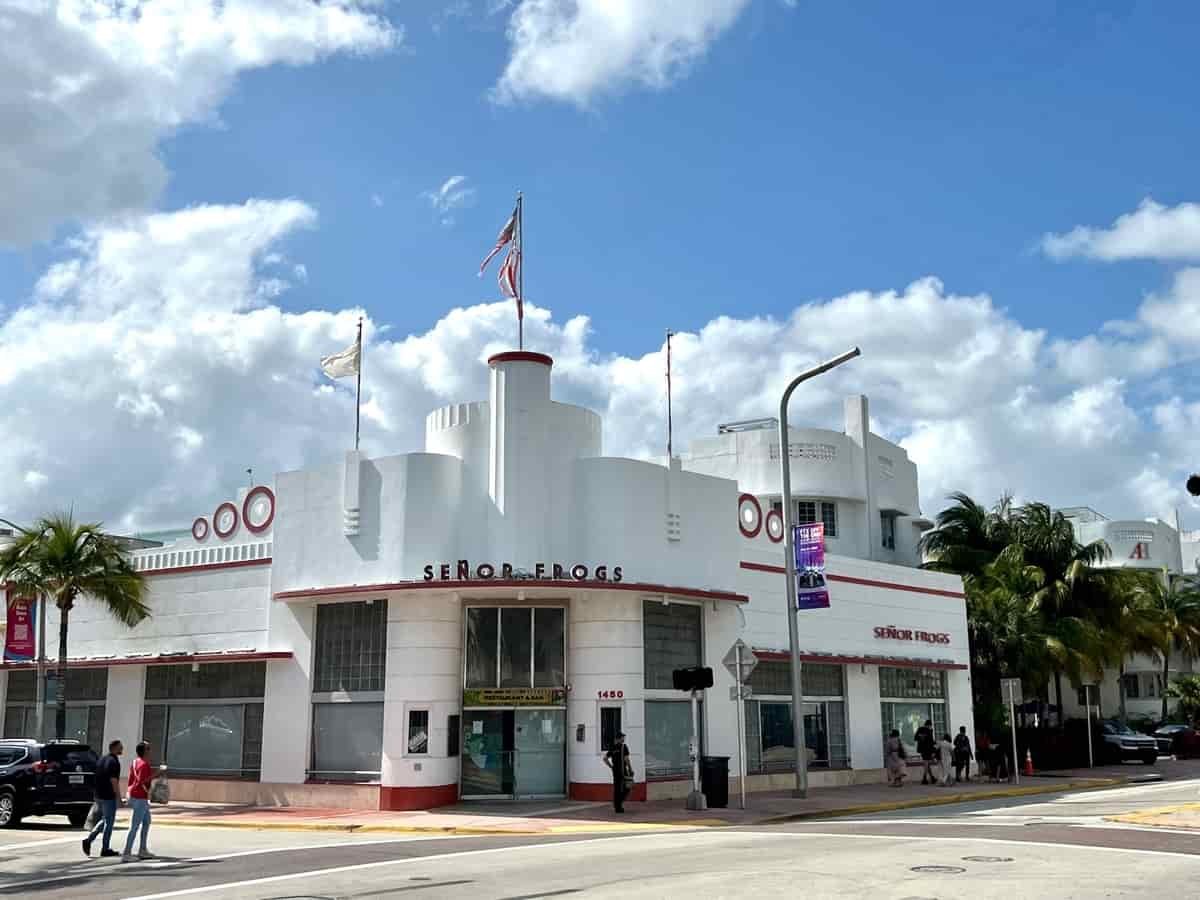Art Deco Architectural Style (1920-1939)
The Art Deco style was born in reaction to the artistic excesses of the Art Nouveau style (1920-1940). It’s kind of a return to reason.
This style knows a huge diffusion in the world and encompasses both the exuberant boom of the 1920s and the crisis of the 1930s. With its geometric lines, robust and light style Art Deco seduces the world!
Scott Fitzgerald (American writer) will say of this style:
“Art Deco was built by the nervous tension accumulated and not expended during the war”
– Scott Fitzgerald
This style comes just after the horrors of the First World War, and tries to forget the millions of deaths. We can therefore say that the characteristics of Art Deco are greatly influenced by the desire for national belonging, a return to tradition, with one goal: reassurance.
It is also the style of the Roaring Twenties, of Hollywood skyscrapers, of a modern and mechanized era.
The 1925 International Exhibition of Modern Decorative and Industrial Arts in Paris will mark its peak.
1925, when Art Deco seduces the world
The International Exhibition of Modern Decorative and Industrial Arts welcomed more than 15 million visitors to Paris.
It marks the apogee of the Art Deco style on the international scene. Although it was not the most important, it was the most resounding, the most influential.
That’s not all.
The great diversity of the works presented showed the different faces of Art Deco to the eyes of the world. Thus, furniture, chandeliers, sculptures and paintings offered an anthology of works that will be gathered in the most beautiful Art Deco museums in the world.
This exhibition was a great success. The staging efforts were considerable: shows and light shows highlighting the city of Paris, considered the city of shopping and extravagance.
This exhibition brought about a real fusion between Art Deco and commerce: advertising and shop windows encouraged more than ever to consume, a movement already initiated by Art Nouveau and department stores.
Twenty-one countries participated in this meeting. Alongside France, Austria, Holland, Great Britain, Sweden, Denmark and even Russia, this exhibition had only one goal: to present only works that testify to real modernity.
Imitations of old styles had no place. It was a success.
We can then think that the whole was homogeneous, but no, quite the contrary. Each nation appropriated this movement by presenting its own national style.

Art Deco motifs: fauna, flora, geometry
One of the distinctive characteristics of this architectural style is the recurring use of a series of traditional ornaments and motifs.
We turn our backs on Art Nouveau, but not on tradition, by borrowing old motifs from past centuries, which we purify and geometricize. The styles are rather reassuring, a consequence of the trauma of the First World War.
There are different styles: the Empire, the Restoration and the Louis-Philippe style. However, certain privileged styles of Art Nouveau are resisting, but in a completely different form. I named naturalism.
The representation of this nature must then adapt to the modern style. We combine nature with the reign of the machine. Thus, Art Deco imposes a symmetrical treatment on nature, while Art Nouveau celebrated its asymmetry.
We move away from realism, we impose a framework that does not accept any overflow.
The decoration of the Art deco style is illustrated by a classic, the cubist rose. We find this interpretation of nature in a large number of works.
Read also: Most Famous Paintings in the World
Animals and insects are also represented in a very stylized way to become a modern symbol. The deer, the antelope, without forgetting the panther represent the exoticism of the Art Deco style.
Geometric shapes are also very present in this style of works. This avant-garde art allowed them to express the quintessence of the modern world.
The circle, the square, the line express a certain dynamism. Its full expression is found in textiles and graphic art. The artists thus work on the lines, the surfaces, in search of effects for the interior decoration. It is a completely different approach, ornamentation takes a back seat, erased by a growing desire for abstraction.
Different materials are used: glass, chrome, aluminum, it is a real revolution for interior decoration, in complete opposition to the Art Nouveau style, often heavy and loaded. It is also one of the ways to recognize Art Deco, line and reason.
Sources: PinterPandai, Britannica, The Spruce, The Art Story
Photo credit (main photo): CleverlySmart



